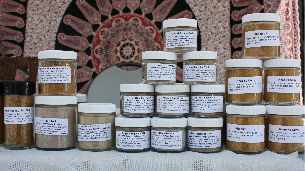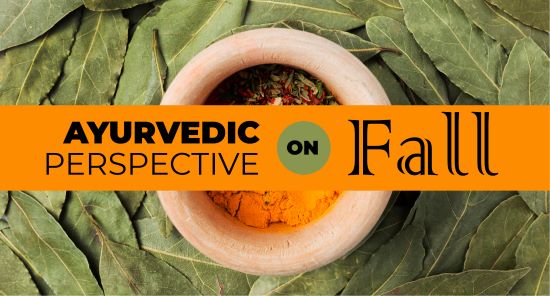🍂 Ayurvedic Perspective on Fall
Sharad Ritucharya (Fall Seasonal Routine)
Ayurveda teaches us to live in harmony with the seasons. This practice is called Dinacharya (daily routine) and Ritucharya (seasonal routine). By following these rhythms and making adjustments according to your Prakriti (original body type), you can maintain strength, balance, and immunity throughout the year.
🌿 What is Sharad Ritu?
Sharad Ritu is the Sanskrit name for early autumn—the time when the heat of summer begins to fade, the days grow shorter, and nature prepares for rest.
Leaves change color and fall from the trees.
Birds migrate to warmer climates.
Animals begin to gather food and prepare for hibernation.
This natural transition reflects what also happens in our bodies and minds. Ayurveda teaches that if we align with these changes, we stay healthy through the season.
🍁 Dosha Changes in Fall
Each season affects the doshas—Vata, Pitta, and Kapha—differently. Fall especially impacts Vata and Pitta.
Vata dosha (air + space):
Summer’s heat is drying and aggravates Vata. When fall arrives with its cool, windy, and erratic nature, Vata naturally increases, leading to dryness, sensitivity to cold, restlessness, and weaker digestion.Pitta dosha (fire + water):
Pitta accumulates during summer. In early autumn, the lingering heat and humidity can aggravate Pitta, causing excess internal heat. Later in autumn, as the air cools and becomes dry, digestion weakens further, and Pitta imbalances may settle in the body.
🔥 Agni (Digestive Fire) in Autumn
In Ayurveda, Agni (digestive fire) is central to health.
During autumn, our strength and energy are moderate.
Agni begins to strengthen in this season, but it can still be easily disturbed by excess dryness, cold winds, or irregular eating habits.
Supporting digestion with the right diet ensures good energy and immunity before winter.
🥘 Ayurvedic Dietary Guidelines for Fall
To maintain balance in autumn, Ayurveda recommends foods that pacify aggravated Pitta and prevent excess Vata.
Recommended Qualities
Madhura (sweet)
Tikta (bitter)
Laghu (light)
Sita (cooling and calming)
Supportive Foods
Grains: basmati rice, quinoa, oats, wheat.
Vegetables: squashes, beets, carrots, sweet potatoes, kale, cabbage.
Fruits: apples, pears, figs, grapes, pomegranates.
Proteins: mung dal, tofu, soaked almonds, sunflower seeds.
Dairy (if tolerated): milk, ghee, soft cheeses, yogurt.
Spices: coriander, fennel, cumin, cardamom, cinnamon (warming but not overly hot).
Foods to Limit
Excessively hot, spicy foods (like chilies and cayenne).
Fermented foods, vinegar, and alcohol.
Very dry or raw foods, which increase Vata.
🌬️ Lifestyle Recommendations
Stay warm and steady → avoid too much wind and cold exposure.
Maintain a routine → eat meals at regular times, go to bed early, and rise early.
Gentle exercise → yoga, walking, or light movement to balance Vata.
Self-care rituals → warm oil massage (Abhyanga) helps reduce dryness and calm the nervous system.
Herbal teas → drink warm teas with cumin, coriander, fennel, or cinnamon.
🌟 Seasonal Takeaway
🍂 Autumn is a time of change. To stay balanced:
Follow a seasonal diet suited to your body type (Vata, Pitta, or Kapha).
Eat warm, nourishing foods.
Support digestion and immunity with daily routines.
✨ By living in rhythm with Sharad Ritucharya, you can enter winter with strength, stability, and resilience.


















